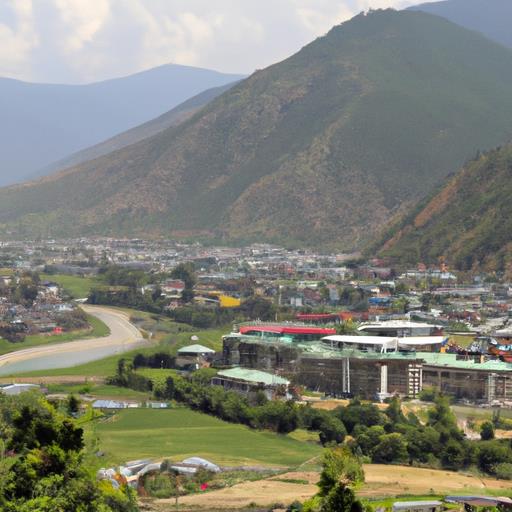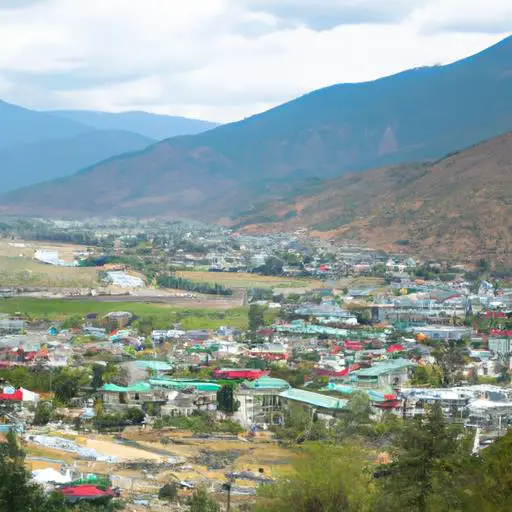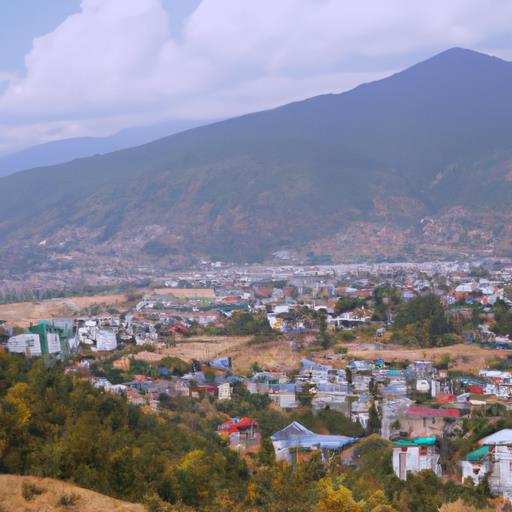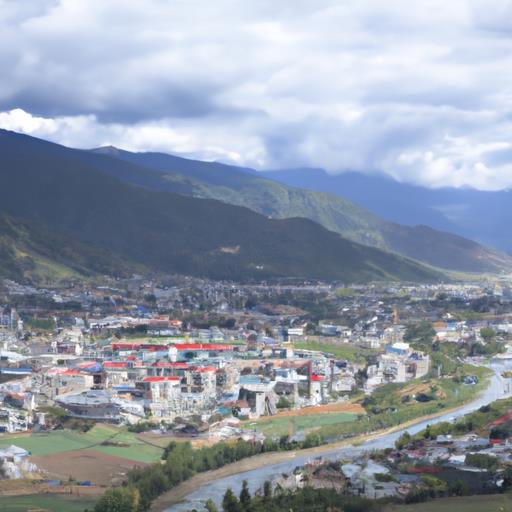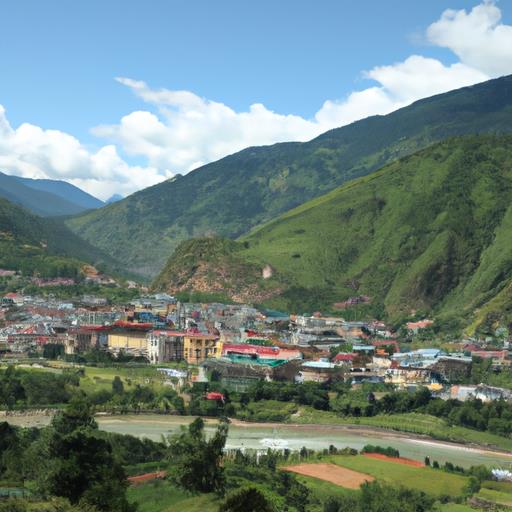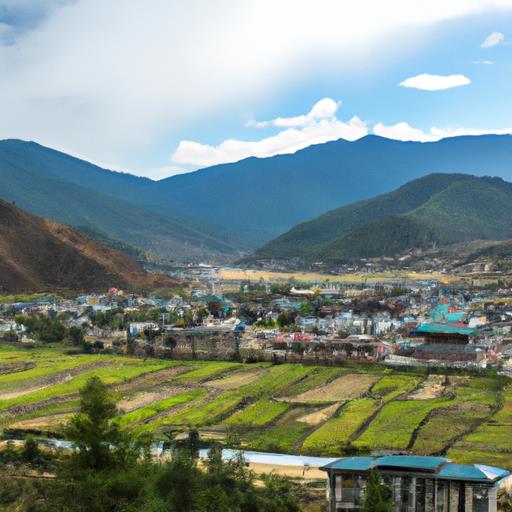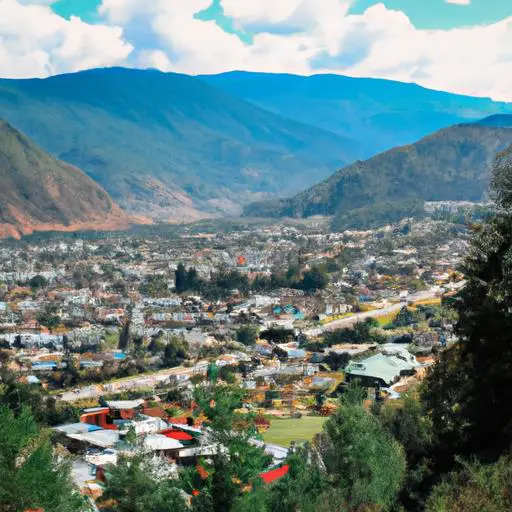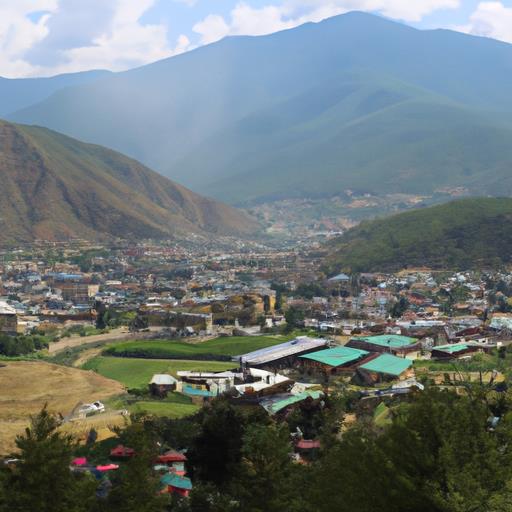History & Information About Pema Gatshel Dzong, Bhutan
Pema Gatshel Dzong is a magnificent fortress located in the eastern part of Bhutan. It stands proudly on a hilltop, overlooking the stunning landscapes of the Pema Gatshel district. The dzong is not just a historical monument but also serves as an administrative center for the local government.
The construction of Pema Gatshel Dzong dates back to the 18th century during the reign of the legendary Druk Desi Tenzin Rabgye. The dzong was built to defend the region against invasions from neighboring countries and played a crucial role in safeguarding the eastern border of Bhutan.
The architecture of Pema Gatshel Dzong reflects traditional Bhutanese design principles. The dzong is a combination of intricate woodwork and stone masonry. Its walls are adorned with beautiful paintings and carvings that depict Bhutanese folklore and religious stories.
One of the standout features of Pema Gatshel Dzong is its strategic location. Perched on a hill, the dzong offers panoramic views of the surrounding valleys and mountains. The location also provides a natural defense against potential attackers, as the steep terrain makes it difficult to approach.
Inside the dzong, visitors can explore various administrative offices, temples, and assembly halls. The dzong also houses the living quarters of the monks and religious officials. It serves as a hub for religious and cultural activities, including festivals and ceremonies.
Pema Gatshel Dzong holds great historical and cultural significance for the people of Bhutan. It has witnessed the changing tides of time, surviving numerous conflicts and political changes. The dzong stands as a symbol of strength, resilience, and the rich heritage of Bhutan.
The region surrounding Pema Gatshel Dzong is known for its scenic beauty and natural wonders. Visitors can explore the lush green valleys, pristine rivers, and serene forests. The district is also famous for its traditional handicrafts and vibrant festivals.
To reach Pema Gatshel Dzong, visitors can take a scenic drive through the winding mountain roads of Bhutan. The journey offers breathtaking views of the Himalayas and allows travelers to immerse themselves in the tranquility of the Bhutanese countryside.
Visiting Pema Gatshel Dzong provides an opportunity to delve into the rich history and culture of Bhutan. It offers a glimpse into the ancient traditions and way of life of the Bhutanese people.
Overall, Pema Gatshel Dzong is a jewel in the crown of Bhutan's architectural heritage. Its grandeur, historical significance, and natural beauty make it a must-visit destination for anyone exploring the eastern part of Bhutan.
Similar post
Interesting Lesser Known Facts About Pema Gatshel Dzong, Bhutan City
Pema Gatshel Dzong is a fascinating city located in Bhutan, offering a rich history and culture to explore. Here are some lesser-known but interesting facts about this beautiful place:
- Dzong Architecture: Pema Gatshel Dzong showcases stunning traditional Bhutanese architecture. Its intricate designs, vibrant colors, and strategic location on a hilltop make it a sight to behold.
- Historical Significance: This dzong holds immense historical significance as it was constructed to defend against invasions. It served as a crucial military fortress in the past, guarding the region against external threats.
- Natural Beauty: Surrounding the city, you will find breathtaking natural beauty with lush green valleys, majestic mountains, and serene rivers. The picturesque landscape is perfect for nature enthusiasts and photographers.
- Rich Cultural Heritage: Pema Gatshel Dzong is deeply rooted in Bhutanese culture and tradition. Visitors can witness colorful festivals, traditional dances, and religious ceremonies, providing a glimpse into the vibrant local lifestyle.
- Unique Arts and Crafts: The city is known for its exceptional craftsmanship. Skilled artisans create beautiful handmade items such as wood carvings, thangka paintings, and traditional Bhutanese textiles. Exploring local markets is a must.
- The Haa Valley Connection: Pema Gatshel Dzong is the southern gateway to the Haa Valley. This pristine valley offers breathtaking landscapes, ancient monasteries, and is known for its authentic traditional lifestyle.
- Educational Hub: The city is home to several educational institutions, including schools and colleges. It plays a significant role in providing education to the local community and students from surrounding regions.
- Untouched by Mass Tourism: Pema Gatshel Dzong remains relatively undiscovered by mass tourism, allowing visitors to enjoy an authentic, off-the-beaten-path experience. It is an ideal destination for those seeking tranquility and a deeper cultural immersion.
These are just a few glimpses into the remarkable features that make Pema Gatshel Dzong a hidden gem worth exploring. Plan a visit to this enchanting city and discover more about its intriguing history, captivating natural wonders, and rich cultural heritage.
Related Post
Travel Guide for Visiting Pema Gatshel Dzong, Bhutan
Pema Gatshel Dzong is a must-visit destination in Bhutan that offers a glimpse into the country's rich history and culture. Situated in the district of Pema Gatshel, the dzong is a stunning architectural marvel that attracts tourists from all over the world. Here's a detailed travel guide to help you plan your visit.
Getting There
Pema Gatshel Dzong is located in the eastern part of Bhutan, around 600 kilometers away from the capital city, Thimphu. The best way to reach here is to fly into Paro International Airport and then take a domestic flight to Yongphulla Airport, which is the nearest airport to Pema Gatshel. From Yongphulla, you can hire a taxi or take a local bus to reach the dzong.
Where to Stay
Pema Gatshel offers a range of accommodations to suit different budgets. You can find guesthouses, hotels, and resorts in and around the town. It is advisable to book your accommodation in advance, especially during peak tourist season, to ensure availability.
Things to Do
1. Explore Pema Gatshel Dzong: The main attraction of the town is the magnificent Pema Gatshel Dzong. Take your time to stroll through the dzong's intricate architecture, beautiful courtyards, and serene surroundings. Don't forget to visit the temple inside, which is a place of worship and spiritual significance.
2. Visit the Local Monasteries: Pema Gatshel is known for its rich Buddhist heritage, so make sure to visit some of the monasteries in the area. The most famous ones are the Tamshing Monastery, Kharchu Dratsang, and Zangdopelri Monastery. These monasteries offer a serene atmosphere and a chance to learn about Bhutanese spiritual practices.
3. Go for Nature Walks: Pema Gatshel is blessed with stunning natural beauty. Take some time to explore the surrounding hills, forests, and rivers. You can go on guided nature walks or hikes to enjoy the pristine landscapes and spot some exotic flora and fauna.
4. Discover Local Culture: Immerse yourself in the local culture by interacting with the friendly people of Pema Gatshel. Visit local markets to get a taste of traditional Bhutanese food and shop for unique handicrafts and souvenirs. Don't miss the opportunity to witness traditional cultural performances and festivals if there are any happening during your visit.
Best Time to Visit
The ideal time to visit Pema Gatshel Dzong is during the spring and autumn seasons when the weather is pleasant and the skies are clear. Avoid visiting during the monsoon season (June to September) due to heavy rainfall, which might hinder outdoor activities and sightseeing.
Travel Tips
- Respect the local customs and traditions, especially when visiting religious sites.
- Carry appropriate clothing and footwear for your visits to dzongs and monasteries, as respectful attire is required.
- Stay hydrated and carry sunscreen and insect repellent, especially during nature walks.
- It is advisable to hire a local guide who can provide insights into the history and significance of the dzong and other attractions.
Enjoy your trip to Pema Gatshel Dzong and soak in the beauty and spirituality of this enchanting Bhutanese destination!
Related Post
FAQs about Pema Gatshel Dzong, Bhutan
What is Pema Gatshel Dzong?
Pema Gatshel Dzong is a fortress and Buddhist monastery located in the district of Pema Gatshel, Bhutan. It serves as an administrative center and religious stronghold of the region.
What is the significance of Pema Gatshel Dzong?
Pema Gatshel Dzong holds great importance in the cultural and religious history of Bhutan. It serves as a hub for religious activities, housing numerous monks and providing a place for meditation and learning. It also functions as a center for local governance and official proceedings within the district.
How old is Pema Gatshel Dzong?
The exact age of Pema Gatshel Dzong is not known, but it is believed to have been built in the 18th century. Like many other dzongs in Bhutan, it has gone through multiple renovations and rebuilds over the years to maintain its structural integrity.
What does Pema Gatshel Dzong look like?
Pema Gatshel Dzong follows the traditional Bhutanese architectural style known as Dzongpum. It features towering whitewashed walls adorned with colorful artwork and intricate woodwork. The dzong exhibits a majestic presence, situated on elevated ground overlooking the surrounding landscape.
Can visitors enter Pema Gatshel Dzong?
Yes, visitors are allowed to enter certain parts of Pema Gatshel Dzong. However, it is important to be respectful of the religious practices and traditions observed within the dzong. Some areas may be restricted, and it is advisable to seek permission or guidance from the appropriate authorities before exploring.
What other attractions are near Pema Gatshel Dzong?
Pema Gatshel Dzong is surrounded by natural beauty, with lush green valleys and rolling hills in its vicinity. Visitors can explore scenic trails, visit nearby temples and monasteries, or engage in outdoor activities like hiking and birdwatching. The district of Pema Gatshel also offers a glimpse into the unique culture and lifestyle of the local Bhutanese communities.
Similar post

